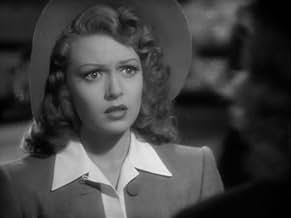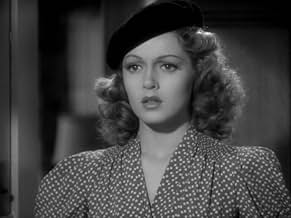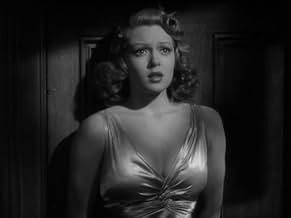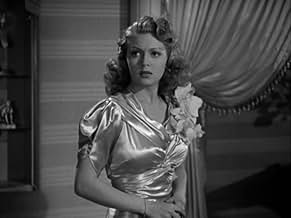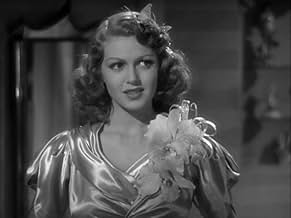Eddie sells his song to a Broadway producer and also lands a job dancing in the musical. He sends for his dance partner-fiancée Molly who brings her younger sister Pat. Upon seeing Molly and... Read allEddie sells his song to a Broadway producer and also lands a job dancing in the musical. He sends for his dance partner-fiancée Molly who brings her younger sister Pat. Upon seeing Molly and Pat dance, the producer picks Pat for the show and gives Molly a job selling cigarettes. ... Read allEddie sells his song to a Broadway producer and also lands a job dancing in the musical. He sends for his dance partner-fiancée Molly who brings her younger sister Pat. Upon seeing Molly and Pat dance, the producer picks Pat for the show and gives Molly a job selling cigarettes. A wealthy friend of the producer named Chad, also has is eye on Pat. Pat is teamed with Ed... Read all
- Director
- Writers
- Stars
- Awards
- 2 wins total
- Ito
- (as Otto Hahn)
- Secretary
- (uncredited)
- Spinster at Bus Station
- (uncredited)
- Reporter
- (uncredited)
- Radio Contestant
- (uncredited)
- Second Girl in Powder Room
- (uncredited)
- Nightclub Powder Room Attendant
- (uncredited)
- Little Girl
- (uncredited)
- Bus Station Master
- (uncredited)
- Director
- Writers
- All cast & crew
- Production, box office & more at IMDbPro
Featured reviews
The film begins with a young singer/songwriter (George Murphy) getting discovered. However, Eddie's a regular guy and he's sure to not only take this great job but make sure there's a job for his old sweetie, Molly (Joan Blondell), and her kid-sister, Pat (Lana Turner). Unfortunately, when Molly and Pat try out for the show, the producers like Pat but have no use for Molly. Molly, however, insists that Pat take the job and they give Molly a job as a cigarette girl. Now Pat and Eddie are poised for stardom...but what about nice-girl Molly? And what about Pat? The lecherous producer might just have his eyes on her...as does Eddie!
So is the film any good? Well, it's pleasant and enjoyable--and with a few amazing sets which hark back to the original "Broadway Melody". As for the story, it is a bit old fashioned but the actors did a nice job and managed to make it work. Also, Blondell's character, Molly, is a HUGE improvement over the original film in which 'Hank' is very unlikable--whereas here, Molly is much more likable and you can understand Pat and Eddie's concerns about her--which makes the plot make more sense. Overall, not a great musical by any stretch but enjoyable if you like the genre and a slight improvement over the original.
By the way, I did have to laugh about the subplot in the film where Eddie and Molly are worried that sweet, innocent Pat might get seduced by the playboy producer--a man who's been married several times. Lana Turner (Pat) in real life was married eight times (one of the husbands she married twice), so these concerns seemed a bit silly.
This more light-hearted remake of the very first Oscar winner is typical of the slick, polished style which MGM movies had in the forties, even in their B pictures. Obviously the acting in this is more natural, although every sane person will take an instant dislike to George Murphy whose cocky performance is more than irritating and even less genuine than Charles King's in the original. The production is of course not even on the same scale as in the first picture when they were just learning how to make talking pictures but interestingly the songs in this version are just as terrible as in the first one.
MGM made this film was a showcase their new star, Lana Turner which meant that Joan Blondell was relegated to playing second fiddle to her. She's the less glamorous, less sexy sensible older sister - almost a maternal role. Undaunted by 'reaching a certain age' (34!) she raises to the challenge and gives a very genuine and sensitive performance.
The role of the older sister in this version is more caring and a lot more mature than when Bessie Love played it. She's almost too nice to be true. No doubt because of her acting experience, Joan seems more confident and believable as the self-sacrificing sister but Bessie Love exhibited a real sense of vulnerability and tenderness which gave that very early talkie ten times as much emotional impact. Bessie Love's performance was truly heartbreaking and as disloyal it sounds to lovely Joan, Bessie played this character better.
Similarly, Anita Page's younger sister was raw, immature and gave the impression that she had no idea whatsoever what was happening to her. Her rabbit in the headlights portrayal exactly captured that of a naive girl from the sticks diving head first into a hedonistic cynical world she had no control over. Lana Turner is very sweet and innocent but seems a little too worldly wise. Although she was a better actress, in that role, Anita Page came across with much more authenticity.
Even though the original was made before The Depression, it felt like a more dangerous and grimy world that the sisters found themselves in. If you watch old films, New York in 1940 has a very familiar feel about it which makes this 'new' version a lot less interesting. It's not just because it's sad to see Joan Blondell upstaged by her replacement that I didn't enjoy this as much as the original, I think the actual reason is that the first film was fresh and so much more emotional.
So, viewers take notice! Here, MGM were clearly still trying to determine in what direction they would develop the still young starlet, and were, therefore, consigning her to everything from Andy Hardy to Doctor Kildaire.
In "Two Girls on Broadway," however, she is given an excellent opportunity to display her native rhythm and ability to shift tempo in the lavish production number, "My Wonderful One, Let's Dance." This number, is conceived and filmed, as a sort of hybrid between a Busby Berkely style extravaganza and the sort of routines Hermes Pan was designing for Astaire and Rogers at RKO.
Thus, the number opens with George Murphy and Miss Turner depicted as bar patrons (with full chorus) before a curtain of black lame wherein Mr. Murphy croons the number to Miss Turner. Then the camera, (on a boom) pulls backward in a remarkable crane shot to reveal an enormous stage, and a rotating set equipped with steps, columns, enclosures and sliding walls.
From this point on, Murphy and Turner execute a fast stepping variety of moods and attitudes, including lifts, spins, soft shoe, and ending with an electrifying series of conjoined pirouettes that concludes with Murphy both lifting and rotating Turner with thrilling speed to a racing orchestra.
All told a dizzying feat that proves Miss Turner was fully capable of more than holding her own as a dancer, though I daresay most of her admirers would balk at relinquishing her from her throne as the queen of melodrama.
Did you know
- TriviaThis film was barely successful at the box office, earning MGM a profit of only $12,000 ($209,000 in 2017) according to studio records.
- GoofsWhen Molly wakes Pat up at 11:30 to get to a noon rehearsal, Pat throws the bed covers off herself twice.
- Quotes
'Chat' Chatsworth: I never get married on an empty stomach.
- ConnectionsFeatured in Memories of Oz (2001)
- SoundtracksMy Wonderful One Let's Dance
(1940)
Written by Nacio Herb Brown, Arthur Freed and Roger Edens
Placed on piano, sung and danced by George Murphy (uncredited)
Reprised with George Murphy (uncredited) and Lana Turner (uncredited) dancing
Reprised again with George Murphy (uncredited) singing
Played as background often
Details
- Release date
- Country of origin
- Language
- Also known as
- Choose Your Partner
- Filming locations
- Production company
- See more company credits at IMDbPro
Box office
- Budget
- $427,000 (estimated)
- Runtime1 hour 13 minutes
- Color
- Aspect ratio
- 1.37 : 1
Contribute to this page



